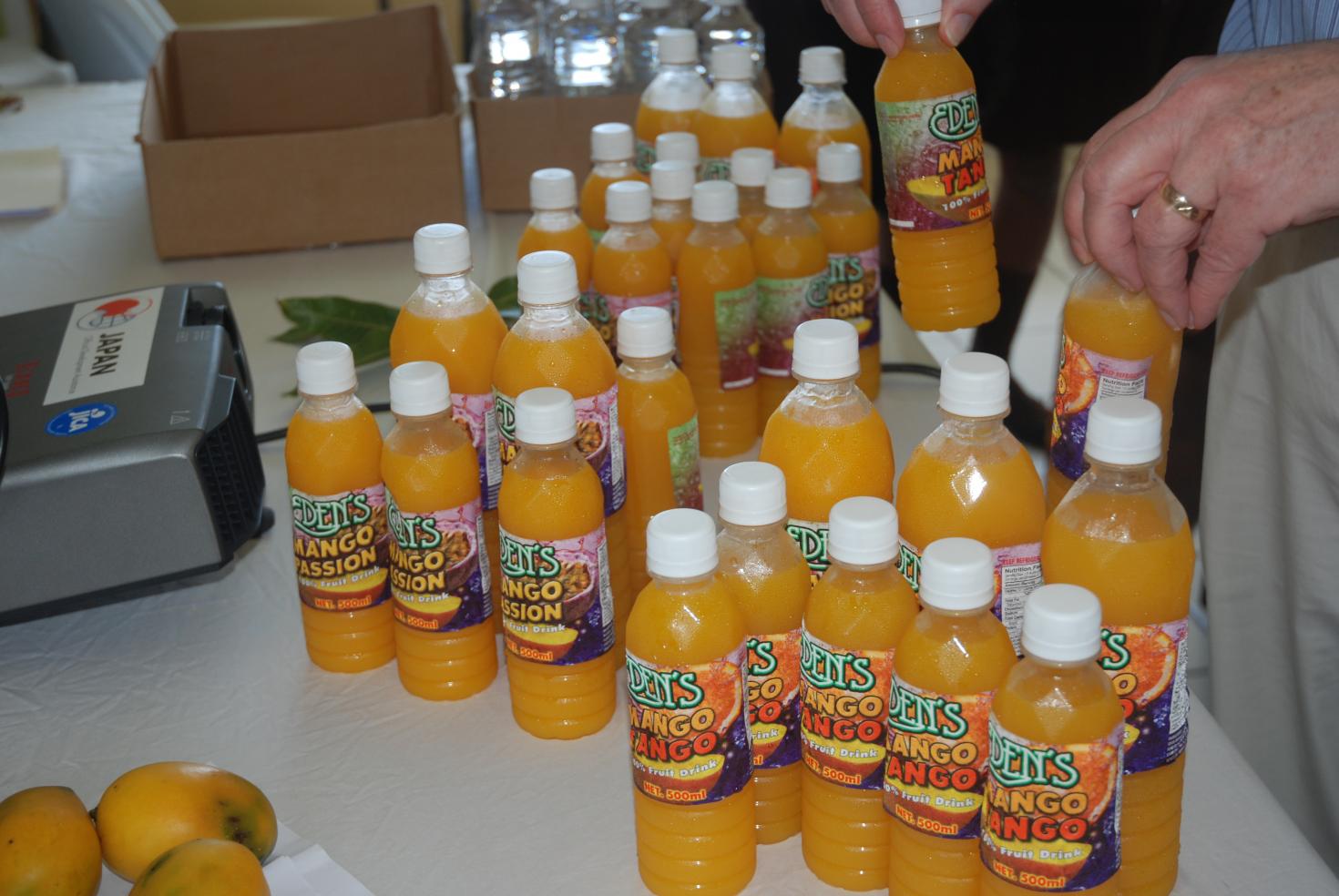Forty-five mango producers participated in a workshop to learn how to add more value to the processing of mango, one of the most prolific and productive fruits grown in Saint Kitts and Nevis.

Saint Kitts. The Minister of Agriculture of Saint Kitts and Nevis, Eugene Hamilton, requested the assistance of the Inter-American Institute for Cooperation on Agriculture (IICA) in enhancing the profitability of the mango industry through greater utilization of value-added products.
To address this request, IICA organized a training workshop with Professor Donald Mercer from Guelph University. The training focused on ways to improve the income of small-scale mango farmers and agro-processors, by developing capacities and adding value to mango and its derivatives in hygienic conditions that can facilitate access to local and regional markets.
“Although mango is one of the most prolific and productive fruits grown in St. Kitts and Nevis, a large amount of the fruit is underutilized and goes to waste,” explained Augustine Merchant, Coordinator of the IICA Delegation in Saint Kitts and Nevis.
The workshop was divided into two phases that provided practical and theoretical information. The first phase focused on various mango products such as mango powder, mango leather, dried natural mango, mango delight, mango jam and dry candied mango; the second phase was mainly about mango juices.
As a result of the workshop, producers now understand the reasons for drying fruits and vegetables and possess knowledge in areas such as quality control, blanching of fruits and vegetables, preparation of mango powder for beverages, hurdle technology and food additives, beverage cost exercise, and chilling and freezing processes.
During the workshop, participants also learned how to make a variety of pure mango juices, including mango and passion fruit juice and mango and lime juice, and received a reference manual.
Two important outcomes of the workshop were the development of a process for extracting juice in adequate hygienic conditions and the establishment of a follow-up program led by local authorities to guarantee productive and sanitary conditions for mango juice production.
More information: augustine.merchant@iica.int











